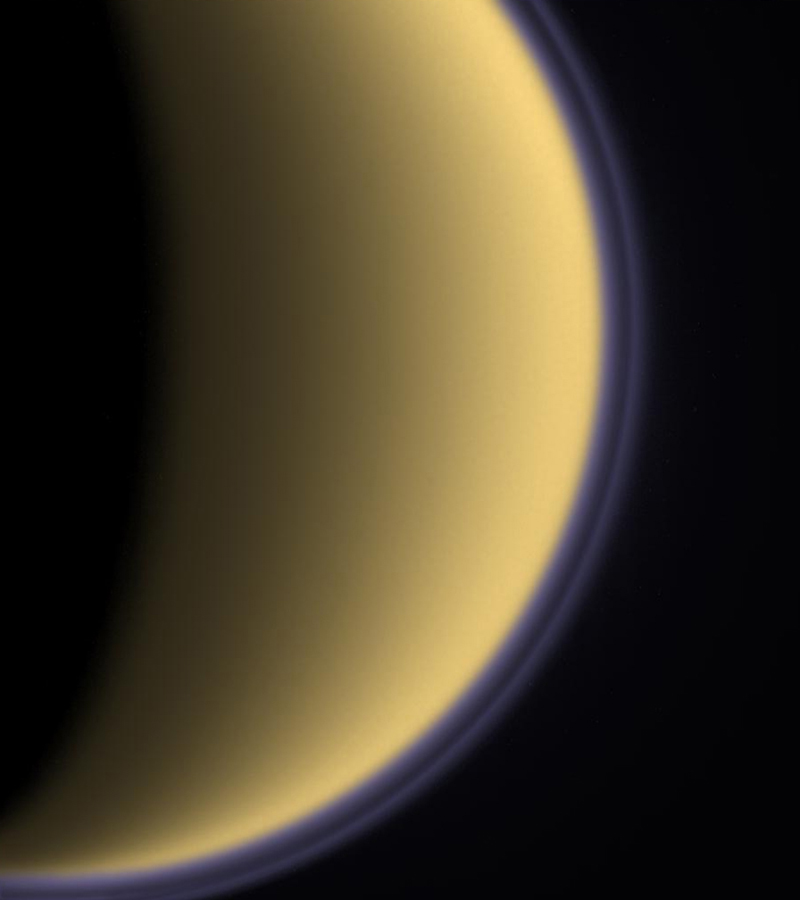Resources
Titan's Haze

Photojournal: PIA06090
Encircled in purple stratospheric haze, Titan appears as a softly glowing sphere in this colorized image taken one day after Cassini's first flyby of the moon on July 2, 2004.
This image shows a thin, detached haze layer that appears to float above the main atmospheric haze. Because of its thinness, the high haze layer is best seen at the moon's limb. NASA's Voyager spacecraft detected such detached haze layers on Titan during their flybys in the early 1980s, and Cassini has conducted an in-depth study of the moon's atmosphere since arriving in the Saturn system. Scientists believe that studying Titan's atmosphere can help us to better understand the atmosphere of our planet when it was very young.
The image was taken using a spectral filter sensitive to wavelengths of ultraviolet light. The image has been false-colored to approximate what the human eye might see were our vision able to extend into the ultraviolet: The globe of Titan retains the pale orange hue our eyes usually see, and both the main atmospheric haze and the thin detached layer have been given their natural purple color. The haze layers have been brightened for visibility.
Credit
NASA/JPL/Space Science Institute


